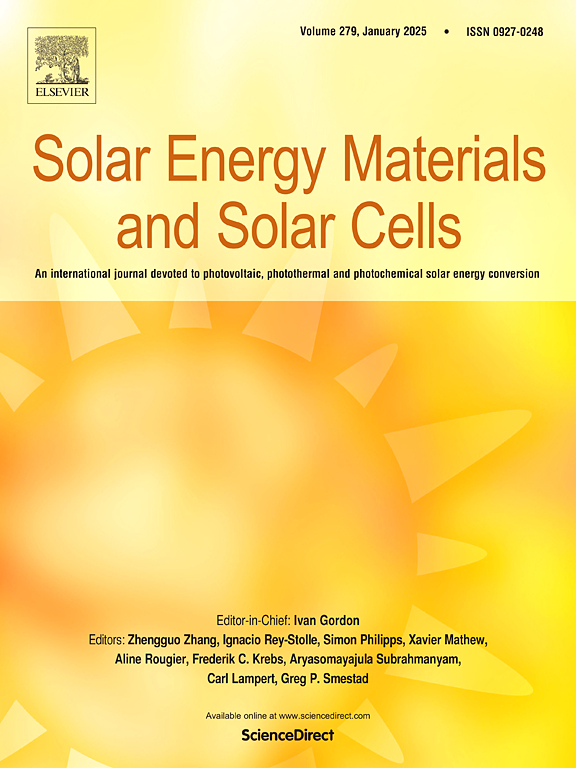采用甲酸蒸汽退火工艺和复合电子传输层同步优化高效钙钛矿太阳能电池
IF 6.3
2区 材料科学
Q2 ENERGY & FUELS
引用次数: 0
摘要
热退火工艺对钙钛矿薄膜((FAPbI3)0.9(MAPbBr3)0.1)的结晶有重要影响。然而,传统的退火方法存在薄膜样品受热不均匀的问题。本文报道了一种蒸汽退火方法,将钙钛矿薄膜在甲酸蒸气中退火,产生均匀的热场来控制结晶。同时,HCOOH有效地提高了样品的结晶度,钝化了缺陷,抑制了去质子化,为钙钛矿的生长建立了最佳的物理化学环境。此外,由SnO2和ZnO纳米粒子(NPs)组成的电子传输层(ETL)表现出增强的电导率和透光率。引入甲基氯化铵(MACl)抑制ZnO nps诱导的去质子化。实验和理论结果揭示了MACl抑制去质子化反应的机理。该方法制备的器件的稳定功率转换效率(PCE)达到23.41%,在长期稳定性试验中保持了初始PCE的83%。本文章由计算机程序翻译,如有差异,请以英文原文为准。
High efficiency perovskite solar cells with synchronous optimization by formic acid vapor annealing process and composite electron transport layer
The thermal annealing process is significant for the crystallization of perovskite films ((FAPbI3)0.9(MAPbBr3)0.1). However, conventional annealing methods suffer from non-uniform heating of film samples. Herein, we report a vapor annealing method that the perovskite film was annealed in formic acid vapor, generating a uniform thermal field to control crystallization. Simultaneously, HCOOH efficiently enhances sample crystallinity, passivates defects and suppresses deprotonation, establishing an optimal physicochemical environment for perovskite growth. In addition, the electron transport layer (ETL) composed of SnO2 and ZnO nanoparticles (NPs) demonstrates enhanced electrical conductivity and light transmittance. Methylammonium Chloride (MACl) is introduced to suppress ZnO NPs-induced deprotonation. The experimental and theoretical results manifest the mechanism of inhibiting the deprotonation reaction by MACl. The stable power conversion efficiency (PCE) of the device prepared by this method achieves 23.41 % and maintains 83 % of initial PCE during the long-term stability test.
求助全文
通过发布文献求助,成功后即可免费获取论文全文。
去求助
来源期刊

Solar Energy Materials and Solar Cells
工程技术-材料科学:综合
CiteScore
12.60
自引率
11.60%
发文量
513
审稿时长
47 days
期刊介绍:
Solar Energy Materials & Solar Cells is intended as a vehicle for the dissemination of research results on materials science and technology related to photovoltaic, photothermal and photoelectrochemical solar energy conversion. Materials science is taken in the broadest possible sense and encompasses physics, chemistry, optics, materials fabrication and analysis for all types of materials.
 求助内容:
求助内容: 应助结果提醒方式:
应助结果提醒方式:


